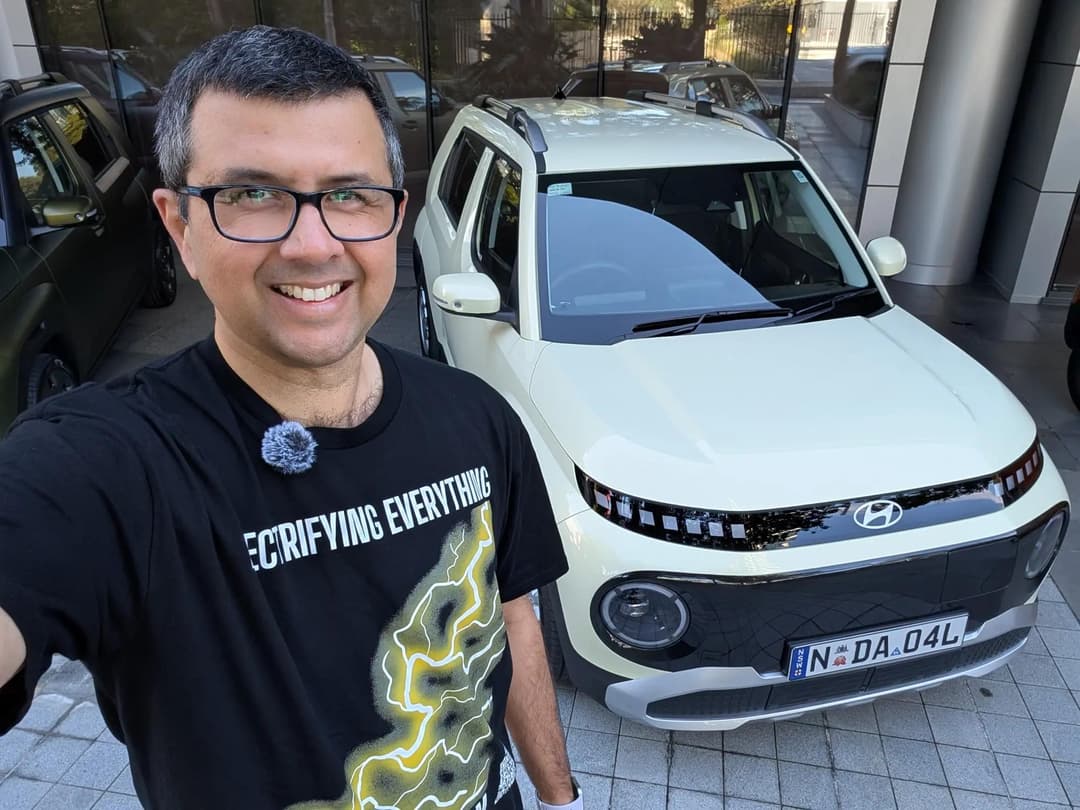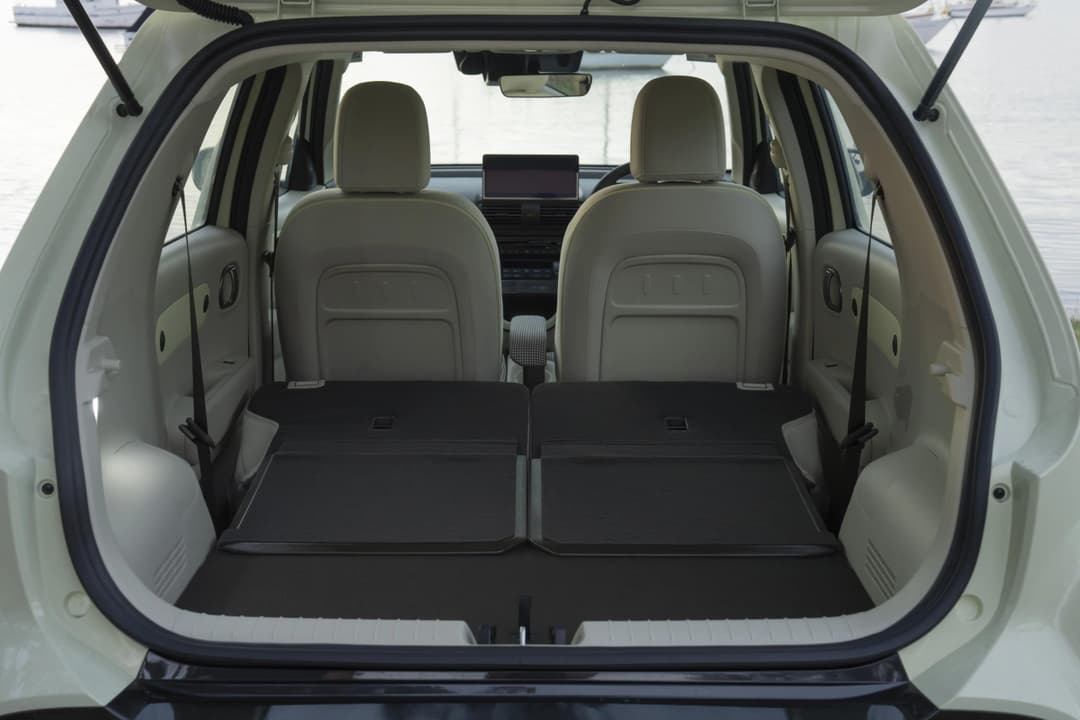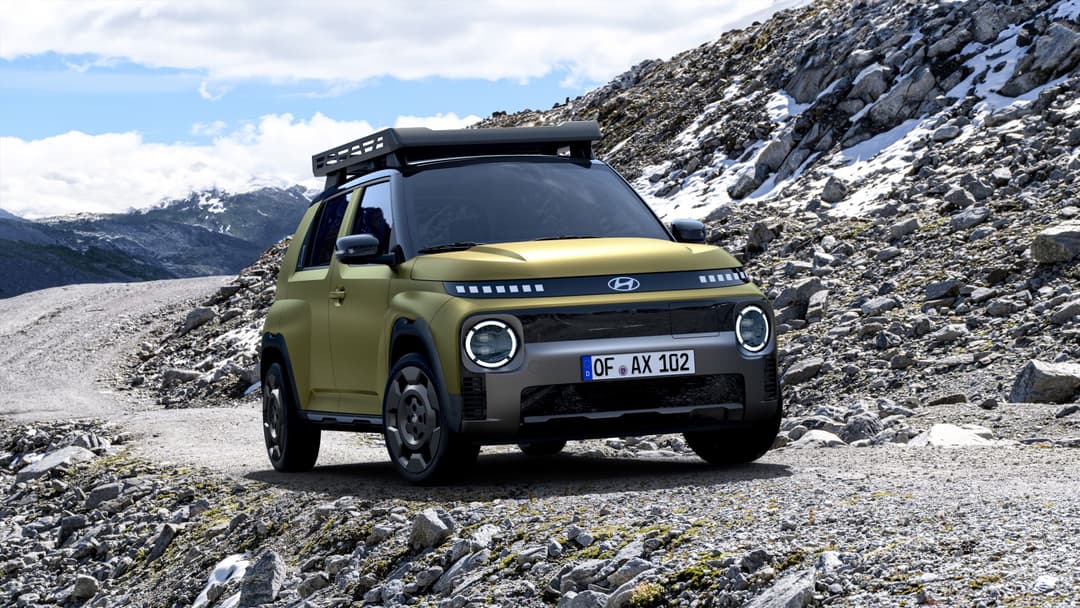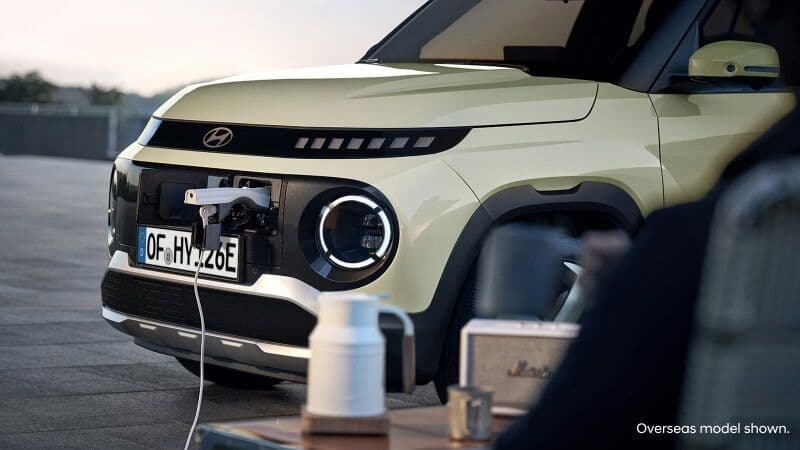Hyundai's latest electric offering challenges conventional thinking about what an Australian urban EV should be. However the high price tag may relegate it to a low ranking in the national EV sales lists.
The new INSTER EV, measuring just 3.825 metres in length, arrives in Australia as one of the smallest electric vehicles available, yet thanks to a long wheelbase manages to deliver space and practicality that defies its compact footprint.

First Impressions: Big on the Inside
At first glance, the INSTER's diminutive dimensions might suggest limited appeal in a market increasingly dominated by larger crossovers and SUVs.
However, Hyundai has engineered this pint-sized electric vehicle to maximise interior space through clever design solutions that transform it from a city runabout into a surprisingly versatile package.
The vehicle's most impressive achievement lies in its interior packaging.
Despite being a full metre shorter than Tesla's Model Y, the INSTER accommodates four adults with comfort levels that exceed expectations for its size class. The extended wheelbase of 2.58 metres, combined with individually sliding rear seats, creates flexibility between passenger comfort and cargo capacity that larger vehicles often struggle to match.
Front seats can also fold flat to enable car camping but this feature is only available in the top INSTER Cross variant.

Market Position
The INSTER occupies a unique position in Australia's electric vehicle landscape.
Whilst other manufacturers focus on larger, more expensive offerings, Hyundai has identified an underserved segment seeking affordable electric mobility without significant compromise on practicality.
Target buyers likely include urban professionals, empty-nesters seeking efficient city transport, and environmentally conscious consumers prioritising efficiency over size.
The vehicle's distinctive styling and colour palette appeal to buyers seeking individuality in an increasingly homogeneous market.

However, the INSTER's compact dimensions, high price and limited range may restrict its appeal among buyers requiring regular long-distance travel.
The vehicle excels in urban environments where its manoeuvrability, efficiency, and parking advantages become most apparent.
The Hyundai INSTER represents thoughtful engineering applied to the challenge of affordable electric mobility.
Whilst its compact dimensions won't suit every buyer, those seeking efficient urban transport will find no alternatives in Australia offering comparable space utilisation and equipment levels in this size of EV.
Pricing and Availability
The INSTER arrives in Australian showrooms with problematic pricing that positions it awkwardly against similarly priced EVs that are larger and/or offer more range:
- INSTER Standard Range: A$39,000 before on-road costs
- INSTER Extended Range: A$42,500 before on-road costs
- INSTER Cross: A$45,000 before on-road costs
Initial allocation of approximately 600 vehicles suggests Hyundai views the INSTER as a niche offering rather than volume seller. The company expects roughly 50 per cent of sales to favour the standard range model, with the Cross variant accounting for 30 per cent of the mix.
The INSTER needed to be at least $5000 if not $10000 cheaper to sell thousands of cars rather than just hundreds annually.
In a cost of living crisis many potential buyers will opt for similarly priced slightly larger hatchback and small SUV models from Chinese EV brands eg: Geely EX5 and MG4 which provide more space and range for the money.
MORE▶️ 5 Cheapest Electric Cars in Australia (2025)
View a full review and POV range & efficiency drive in the video below:
Powertrain Options
Standard Range Model: The entry-level variant features a 42kWh battery pack delivering 327 kilometres of WLTP range, powered by a 71kW electric motor producing 147Nm of torque.
Extended Range Model: The higher-capacity option includes a 49kWh battery extending range to 360 kilometres, with an uprated 84.5kW motor maintaining the same 147Nm torque output.
INSTER Cross Variant: The range-topping Cross model maintains the extended range drivetrain whilst adding adventure-focused styling elements and premium interior appointments.

Charging Capabilities
AC Charging: All variants support three phase 10.5kW AC charging, requiring approximately four hours to charge the standard range battery from 10-100 per cent.
DC Fast Charging: The INSTER supports 10-80% fast charging in just 30 minutes at a 120kW or faster DC charger.
Vehicle-to-Load Technology: A standout feature across the range is the 3.6kW Vehicle-to-Load capability, providing an internal power outlet for camping equipment or emergency home power needs.
MORE▶️ Which Electric Cars Have Bidirectional Charging (V2L, V2G, V2H)?
Design and Practicality
The INSTER's exterior design breaks from the conservative styling typical of many electric vehicles.
Circular LED headlamps, pixelated turn signals, and SUV-inspired proportions create a distinctive appearance that prioritises character over convention.
Six colour options, including standout choices like Buttercream Yellow and Urban Khaki, further emphasise the vehicle's individuality.

Interior space maximisation represents the INSTER's engineering highlight.
The sliding rear seats can be configured to prioritise either passenger legroom or cargo capacity, with boot space expanding from 280 litres to over 1,000 litres with seats folded.
The front seats in the Cross variant fold completely flat, enabling overnight camping within the vehicle.
Technology and Safety
Infotainment System Dual 10.25-inch displays provide the interface for navigation, media, and vehicle functions, with wireless Apple CarPlay and Android Auto compatibility standard across the range.
Hyundai SmartSense The comprehensive safety suite includes Forward Collision-Avoidance Assist, Lane Keeping Assist, Smart Cruise Control with Stop & Go functionality, and Blind-Spot Collision-Avoidance Assist.
Connected Services Bluelink car and smartphone app connectivity enables remote vehicle monitoring, charging management, and over-the-air navigation updates throughout the five-year warranty period.
Real-World Performance
Testing revealed the INSTER's efficiency credentials, with consumption figures ranging from 12.6kWh per 100 kilometres in mixed driving conditions to higher figures when tackling extended highway sections.
The vehicle's narrow 1.61-metre width aids urban manoeuvrability whilst the low centre of gravity from the floor-mounted battery provides stable handling characteristics.
Performance figures suggest the INSTER prioritises urban usability over outright speed.
Acceleration proves adequate and the regenerative braking system offers multiple levels of energy recovery, selectable via steering wheel-mounted paddle shifters.
About the author

Neerav Bhatt has been a technology journalist and photographer for over 20 years appearing in online, print, radio and TV media. His current focus is on helping Australians switch to electric vehicles as well as making their home fully electric, sustainable and climate resilient. Youtube: www.youtube.com/@NeeravBhatt Web: neeravbhatt.com
Stay up to date with the latest EV news
- Get the latest news and update
- New EV model releases
- Get money savings-deal

Privacy policy